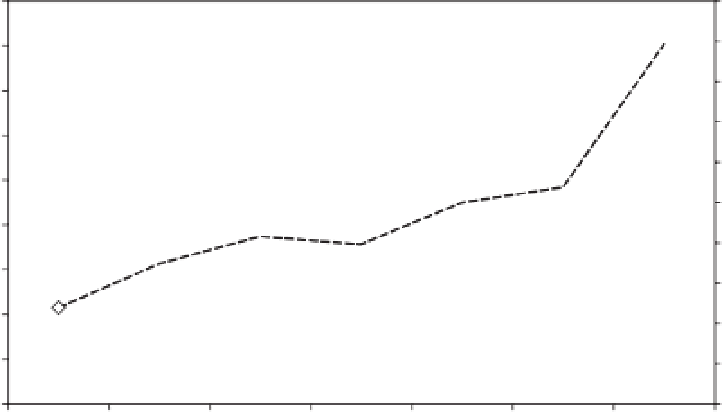Agriculture Reference
In-Depth Information
90
10
9
80
8
70
7
60
6
50
5
40
4
30
3
20
2
10
1
0
0
1978
1983
1988
1993
1998
2003
2008
Productivity
Area
Fig. 21.4.
Total sugarcane crop area (Mha) and yield (Mg ha
-1
) in Brazil, from 1978 to 2008. (From Brasil/
Ministério da Agricultura Pecuária e Abastecimento (2009), data source: IBGE.)
25
20
15
10
5
0
Forest
Pasture
10
years asture
22
years
asture
10
to
sugarcane
12
years
System
F-clay -silt
F-sand
ILF
FLF
Fig. 21.5.
Distribution of soil carbon stocks in different organic matter pools of soils under different land uses
in the Atlantic Forest biome (FLF, free light fraction; ILF, intra-aggregate light fraction); F-sand, F-silt and
F-clay: organic matter associated to sand, silt and clay particles, respectively. (From Campos
et al
., 2004).
significantly higher than burnt sugarcane
(2.01%). This indicates a higher availability
of substrates to microorganisms, and a posi-
tive influence on microbial biomass. Rachid
et al
. (2012) have observed the effects of
sugarcane crop management on soil bac-
terial community structure and nitrogen
cycle functional gene diversity (ammonia


























Search WWH ::

Custom Search